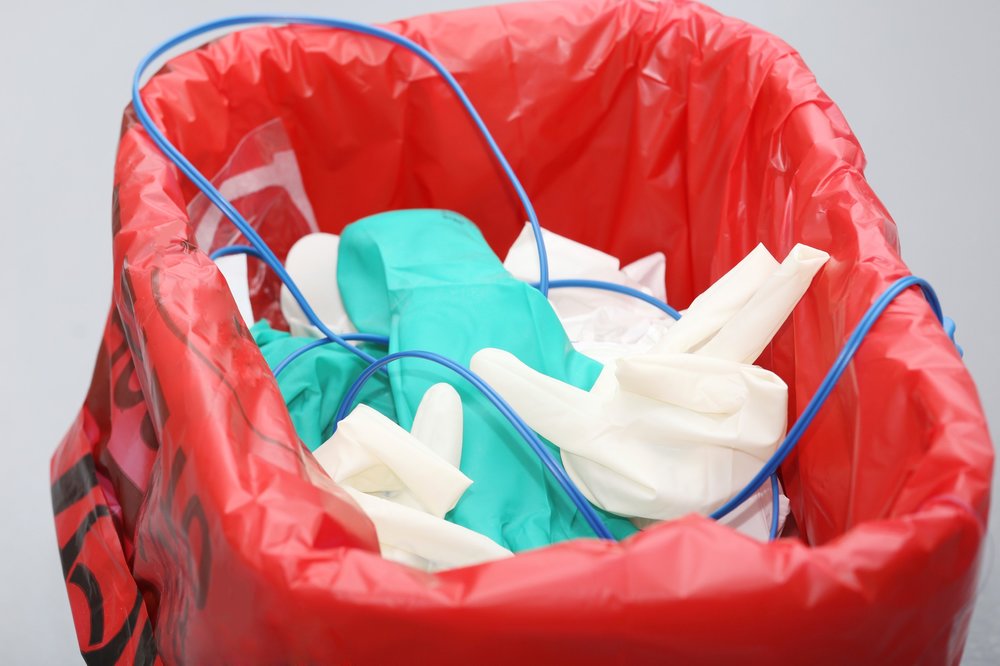‘Medical waste segregation at source, disinfection is a must’

TEHRAN — Segregating medical waste at source and disinfecting medical waste is a must and the municipality had better come up with practical plans to decrease the costs of medical waste management, an official with the Ministry of Health’s department of health and safety executive (HSE) has said.
Wastes generated at health care facilities, such as hospitals, physicians' offices, dental practices, blood banks, and veterinary hospitals/clinics, as well as medical research facilities and laboratories can be considered as medical waste. Generally, medical waste is healthcare waste that that may be contaminated by blood, body fluids or other potentially infectious materials and is often referred to as regulated medical waste.
“Unfortunately there are no autonomous truck services at the municipalities to transfer medical waste produced at health care facilities,” ISNA news agency quoted Mohsen Farhadi as saying on Friday.
Moreover, even if [hazardous and non-hazardous] waste is segregated at source they will be mixed again while being transferred [to the landfills], so that physicians and nurses are not motivated enough to segregate the waste, Farhadi regretted.
“This is why we are requesting the municipality and waste management organization to propose a plan to transfer segregated waste which can reduce the expenses of waste management and is beneficial to the environment and public health,” he added.
Farhadi went on to say that the municipality should allocate two groups of truck services to transfer disinfected and infectious waste separately and they can also charge the hospitals for infectious waste more.
Tehran Municipality should pave the way for medical waste disposal companies at private sector to provide such services to the hospitals, he added, highlighting that if hospitals fail to segregate waste at source waste management organization is free to report their violations to the Ministry of Health.
The ministry is also preparing the necessary guidelines, so that health inspectors can check hospitals to ensure waste segregation at source is being implemented, he noted.
Farhadi also added that each hospital, depending on the kind of medical waste they generate, will be treated differently and waste management organization can impose charges accordingly.
“One of the main problems we are facing are the clinic and surgical centers in Tehran [which also produce medical waste], there are 9,000 to 12,000 doctor’s offices in Tehran waste management organization should also come up with plans [for medical waste management] at these offices as well,” he suggested.
Iran’s Medical Council, as a body tasked with managing the medical community should also do its part in motivating its members for waste segregation at source, Farhadi concluded.
Earlier in July head of the waste management working group affiliated to Department of Environment Kiyoumars Kalantari said that some 115 tons of medical waste is being generated on a daily basis in the province of Tehran. He also regretted that despite the efforts made by the Ministry of Health, except for a few of the hospitals, medical waste is not being regulated in other health-care providing centers.
According to the U.S. Environment Protection Agency, improper management of discarded needles and other sharps can pose a health risk to the public and waste workers. For example, discarded needles may expose waste workers to potential needle stick injuries and potential infection when containers break open inside garbage trucks or needles are mistakenly sent to recycling facilities. Janitors and housekeepers also risk injury if loose sharps poke through plastic garbage bags. Used needles can transmit serious diseases, such as human immunodeficiency virus (HIV) and hepatitis.
Measures to ensure the safe and environmentally sound management of health care wastes can prevent adverse health and environmental impacts from such waste including the unintended release of chemical or biological hazards, including drug-resistant microorganisms, into the environment thus protecting the health of patients, health workers, and the general public.
MQ/MG

Leave a Comment